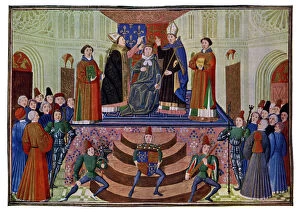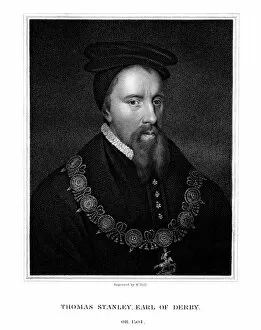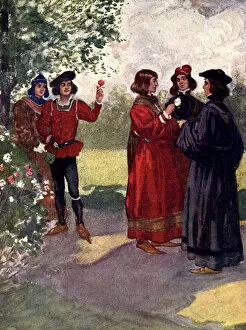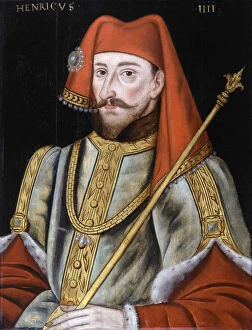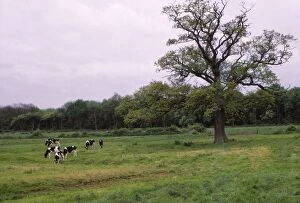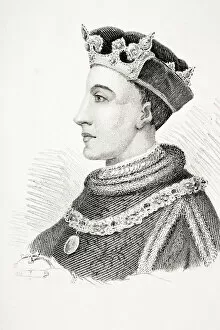House Of Lancaster Collection (#4)
The House of Lancaster, a prominent dynasty in English history, was marked by its influential figures and tumultuous times
For sale as Licensed Images
Choose your image, Select your licence and Download the media
The House of Lancaster, a prominent dynasty in English history, was marked by its influential figures and tumultuous times. One such figure was Margaret of Anjou, Queen Consort of Henry VI. Her portrait, painted with meticulous detail on an oil panel, captures her regal elegance and strength. Another depiction shows Margaret Beaufort, whose aquatint portrait showcases her intelligence and determination. As the wife of King Henry VI, she played a crucial role in shaping the destiny of the House of Lancaster. In contrast to these graceful images is a lithograph depicting Yorkist cannons and archers at Tewkesbury. This artwork serves as a reminder that the Wars of the Roses brought about intense conflict between rival factions vying for power. A map from the 15th century provides insight into this turbulent period. It highlights the territorial struggles during this era when Lancastrians fought against Yorkists for control over England's throne. King Henry VI himself is depicted in various illustrations throughout history. From Player's Cigarette Cards to engravings found in historical texts like "A Short History of the English People, " his image portrays both his royal stature and vulnerability. Henry V also makes appearances through different mediums - be it an engraving or an oil painting on panel. These depictions capture his commanding presence as he led England through victorious battles during his reign. To further understand this era's fashion trends, we look to dress designs inspired by Royal manuscripts and Froissart's accounts. The attire worn during Henry V and VI's reigns includes crimson jackets trimmed with ermine over white dresses adorned with tall jeweled headdresses shaped like hearts – truly fitting for royalty. However, amidst all these grandeur lies tragedy too profound to ignore; one illustration depicts Lord Clifford murdering young Edmund after the Battle of Wakefield—an event that symbolizes not only personal loss but also reflects how deeply divided England had become during this time.


